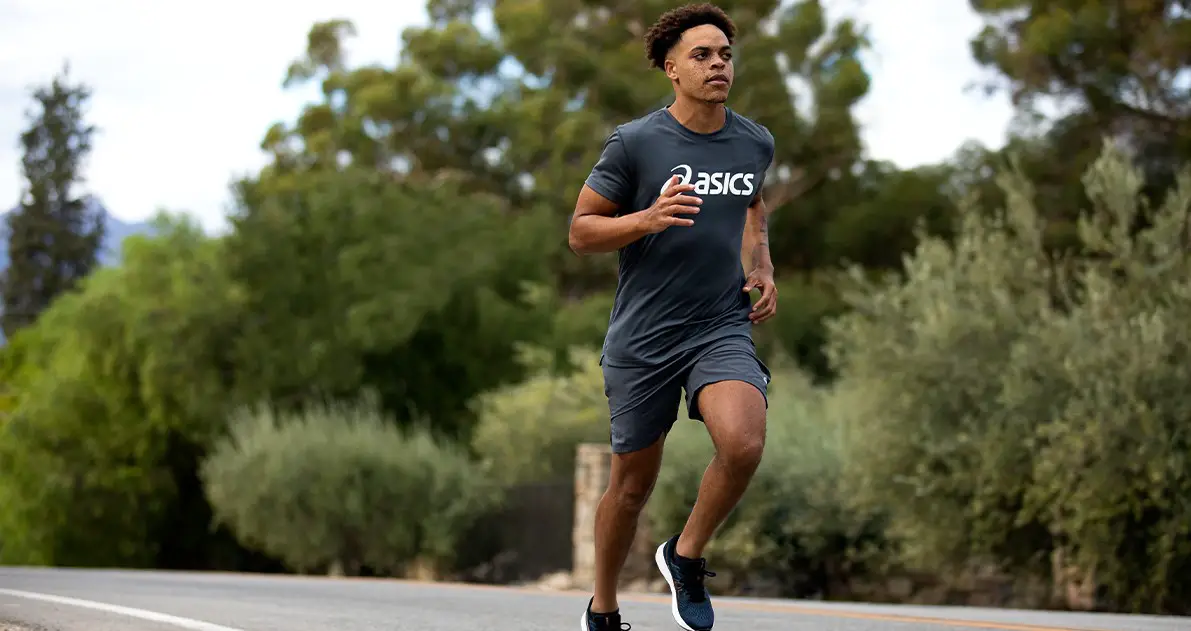Hello, dear readers. If you find this blog, then you most likely want to create or improve your running workout.
If that’s the case, then you’re very lucky. We discuss all types of running and running training on this page, and also help you determine which running workouts are right for you.
So, in case you didn’t know, there are quite a few types of running workouts, each of which has a different distance, pace, and running mechanics.
Also, each of these runs is used for different purposes. Someone wants to become faster, slimmer, or fitter and someone just wants to spend time with themselves while running.
Also, when running, you should try to adhere to the rules set aside so as not to injure yourself or break something accidentally.

Useful tips before running
Many novice runners make elementary mistakes while running. But even such simple mistakes can turn into serious damage. So here are a few tips for you before you start your run:
1. Start with short running interval workouts.
2. Don’t start by running too fast.
3. Choose the right surface.
4. Take short steps and run easy.

As we said, there are a lot of types of running workouts. You should run at different paces for different workouts: easy type of pace, runner’s natural pace, and marathon pace.
Before running fast and marathon pace, you should find out your natural pace because a faster one is different for everyone. If you are a pro runner, then you should compare a runner’s natural pace (your natural pace) with faster paces.
Now, let’s properly talk about each of them.

Base runs
A basic run is run at medium speed and medium intensity and an average pace(this run works at 70% of aerobic capacity).The peculiarity of this run is that it is quite light and not very stressful, but at the same time, like other runs, it impacts your body and your endurance. That’s why a base runner is a medium-effort workout.

Even though such basic workouts are not too stressful, they should be performed quite often. This basic jog should definitely be on your weekly training mileage.
In addition, this training improves aerobic capabilities, endurance, and running economy.
Speaking of distance, choose a short or medium distance for yourself. This way you will still be able to progress in basic running and simultaneously not exhaust your body with heavy loads.
Since you don’t have a specific goal or pace when doing this run, you can just run for fun without overexerting yourself.
Because this workout is not very stressful, many people may think that it is ineffective or unproductive, but in fact, this running workout only serves to warm up and prepare your body for more serious and complex running workouts.

Recovery runs
A recovery run is a low-intensity run that also includes a short distance and a slower pace.
As you might guess from the name, this running workout is mainly designed to restore your body after, for example, a week-long program of heavy workouts and jogging.
Recovery run has many advantages because if you don’t want your body to cool down after a week of easy training, you can take advantage of recovery runs. So your body will slow down the pace, but it will still work and will not lose shape.
Simply put, recovery runs are the easiest workouts since all you need to do is run a relatively short distance while running at your easy pace.
Tip! While recovery runs you should pass the “talk test”, which means you have to handle a whole conversation while running. If you can do it, this means, that you’re running easily enough to carry on an entire conversation as you run.

Interval runs
You can also run at intervals. Interval workouts consist of running in short segments at high speed, which is separated by breath while standing, slow running, or light walking.
This running format focuses on adding a bit of speed to your base run.
Interval run means running at a fairly high intensity, which helps to improve your anaerobic abilities. Also, this interval training helps you get in shape faster and learn to run faster.
But despite all its advantages, we do not recommend that you run at this pace for too long, as this can lead to fatigue very soon.

Interval workouts are usually categorized as short intervals and long intervals.
Short intervals are typically 0,06 to 0,25 miles of fast running. Short intervals boost speed, running economy, and fatigue resistance at fast speeds.
Example: 1 mile of easy running (as a warmup) + 10 x 0,18 miles at a 1-mile race pace with 0,12 miles of recovery runs + 1 mile of easy pace running (as a cooldown).
Long intervals are 0,37 to 0,74 miles of fast pace with recovery jogging between them.
Example: 1 mile of easy jogging (as a warmup) + 5 x 0,62 miles at a 3.1-mile race pace with 0.24 miles of jogging recoveries + 1 mile of easy jogging (as a cooldown).

Tempo runs/Threshold runs
Tempo runs are threshold workouts that contain a long distance (6,2 miles or half marathon pace) and a fairly high pace.
Such training is usually set up to increase speed and sometimes even endurance. After all, tempo run usually last from 20 to 60 minutes, just like regular marathons. A tempo run is one of the speed workouts for increasing your speed.
This sort of workout, like threshold runs, moreover conditions your cardiovascular system to provide and utilize more oxygen at quicker speeds, which is reflected in an improvement in your VO2 max (a measure of your aerobic capacity).
In this way, tempo runs progress your running economy since on the off chance that you’ll be able to convey more oxygen to your working muscles while you’re running and are at the same time way better able to clear metabolic byproducts made when producing energy without oxygen, you can get more vitality faster with less pain.

Fartlek
The Fartlek workout is a speed training cycle that mixes fast and slow paces and different distances. Fartles came from Swedish and translates as “speed play”. Which means playing around with how to run your speed workouts.
Whereas there’s nothing wrong with giving your workouts a little structure, a lot of runners might advantage from removing the underlying stress of hitting a particular time or distance.
Instead, you can focus only on improving your running abilities, without being distracted by the development of speed.
Using Fartlek run is a great way to create productivity and resistance at faster speeds.
The development of these abilities can help you in various races and marathon races.

Progression run
Progression runs are the perfect solution for achieving both speed and endurance in one workout session.
A progression run is a run that starts at a runner’s common pace and closes with a quicker run. These runs are generally planned to be modestly challenging—harder than base runs but simpler than interval runs.
Also, a progression run is a medium-effort workout.
You can start a 5 miles progression run at your common pace. Then you ramp up to half marathon pace from miles 2-3. You should run a faster pace at 3-4 miles, and the last mile is easy to run slower pace.
These types of running workouts are also designed to build mental strength and endurance.

Long run
A long run, simply put, is your base run in which you should just run a long distance and use sustained effort.
But even though you are just running at your usual pace, adding distance also increases your endurance, thanks to this workout.
So basically, you are just training your body to adapt to longer running durations to ensure that it can handle your next race without a problem.
Also, with more endurance with long runs, your body can construct way better muscle and heart strength while preparing its aerobic and anaerobic systems to encourage. All of this will eventually consist of more physiological and biomechanical effectiveness.
Tip! Coaches and distance runners typically attempt to keep your heart rate around 70% of your maximal heart rate in a long run.

Hill repeats
Hill repeats are the hardest workout, including running and harder high-intensity training. First of all, you are running uphill and not even at your natural pace, which is already really hard almost for everyone. Besides this, there are repeated short segments of hard running at the fastest pace in this training cycle, which makes it more challenging.
Besides this, hill repeats have a lot of benefits. For example, it helps you improve your aerobic capacity against pain after and while running.
Also, with this run hill repeats features you can quickly improve your muscles’ explosiveness and create high-intensity fatigue resistance.

Hill workouts construct speed and strength. In some cases running coaches even refer to hill workouts as “disguised strength training” since working against resistance requires more prominent actuation and drive generation from your muscles. You should give a really hard effort for this one.
Example: 2 miles of easy jogging (as a warmup) + 10 x 40-second hill repeats at the fastest pace with 2-minute jogging recovery between repeats + 2 miles of slow jogging (as a cooldown).
Also, here is the best way to finish running. Initially, you should start walking slowly and then you should start running every 3-4 minutes. Repeat this routine if you’re feeling better.

Q&A
Q: How many types of running are there?
A: As we said, there are 8 basic types of running workouts: base runs, recovery runs, interval runs, tempo runs, long-distance runs, fartlek runs, progression runs, and hill repetitions.
Q: What are the three categories of running?
A: Usually runners classify two categories of running, which are anaerobic and aerobic running.

Conclusion
So, as you know now there are 8 types of running and each of them has a slower pace or faster pace, in some of them you can moderate length run undertaken by yourself, and some of them you can include in your weekly mileage, some of them have their own proper running form.
As you understood every type is different, some of them are simple and some of them are really hard workouts (especially for beginners).
If you want to choose a running program for yourself, you should know what exactly you want. Do you want to improve your strength or speed? Do you want to build muscles or even become a professional runner?
Just remember, that all of it will become true one day and all you need to do is to put your maximum effort into it and try hard to see satisfying results.
Good luck my runners!
